If you love watching Shirley MacLaine on screen, see THE LAST WORD. If you love watching Shirley MacLaine at the top of her game and as rapier as ever, see THE LAST WORD. If you just want to see a beautiful cinematic story, see THE LAST WORD. Directed by Mark Pellington with script by Stuart Ross Fink, THE LAST WORD brings together three generations of women – MacLaine, Amanda Seyfried, and newcomer Ann’Jewel Lee – in a story about life, legacy, and all the stuff in between that makes a life worth living. Laced with just enough sentimentality that softens the acerbic (and often hilarious) nature of MacLaine’s character, THE LAST WORD is beyond embraceable.
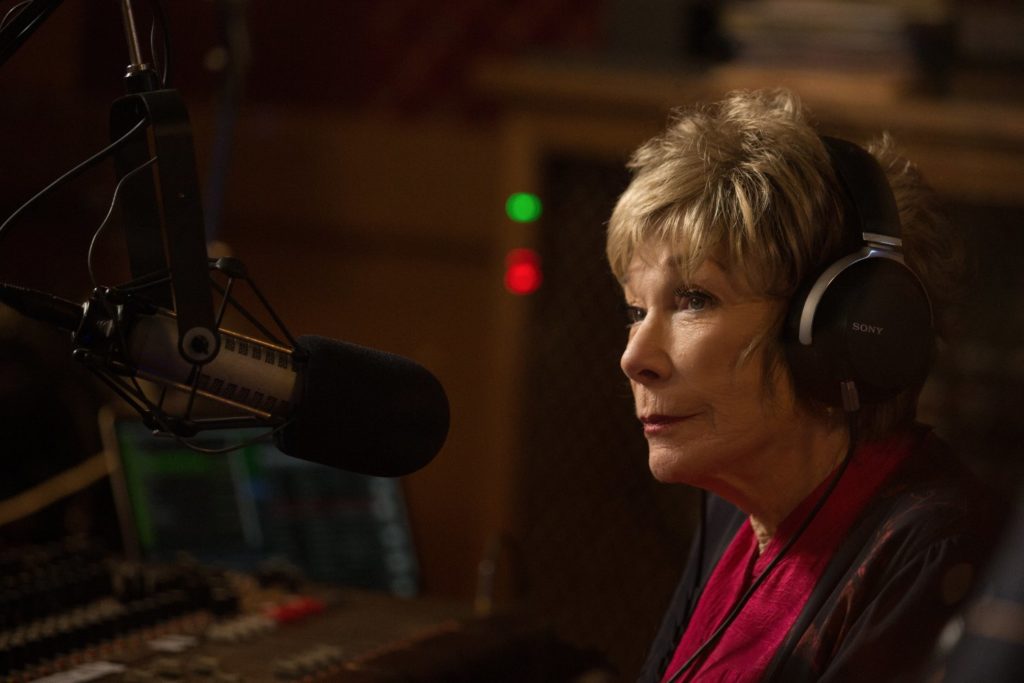
Harriet Lauler is one of a kind. Once formidable as the owner of a top advertising firm in Bristol, she is even moreso in her personal life, in the very genetic make-up of her being. A woman who is in control and controls everything (right down to the directional trimming of the hedges in her yard), she has alienated virtually everyone she has ever met over the course of her life. Now pushing 80 or so, Harriet is alone, rambling about in her multi-story, perfectly apportioned Colonial. But as we quickly see, for all her accomplishments, for all her talent, for all her drive, she is alone, and lonely.
After a brief stint in the hospital following an accidental (or was it) overdose of sleeping pills and red wine, Harriet has a new mission. With life so fleeting, and wanting to have everything just so, she decides to hire the obituary writer to write her obituary – while she’s alive to approve it. Wielding her way as if waving a magic wand, Harriet goes straight to Ronald Odom, publisher of the Bristol Gazette, a daily newspaper she almost single-handedly kept afloat with advertising back in the day when Ronald’s father was publisher.

Eager to please Harriet, Ronald introduces her to his obituary writer, Anne Sherman. Great with dead people, Anne seems to struggle a bit with the living, especially when dealing with Harriet. Handed a list of 200 or so individuals to contact for interviews about Harriet, to say Anne struggles is an understatement. Thanks to a comedic montage, Anne and the audience are privy to everyone’s true feelings about Harriet. From her ex-husband to the local priest to Harriet’s former ob/gyn, nary a kind word is to be heard.
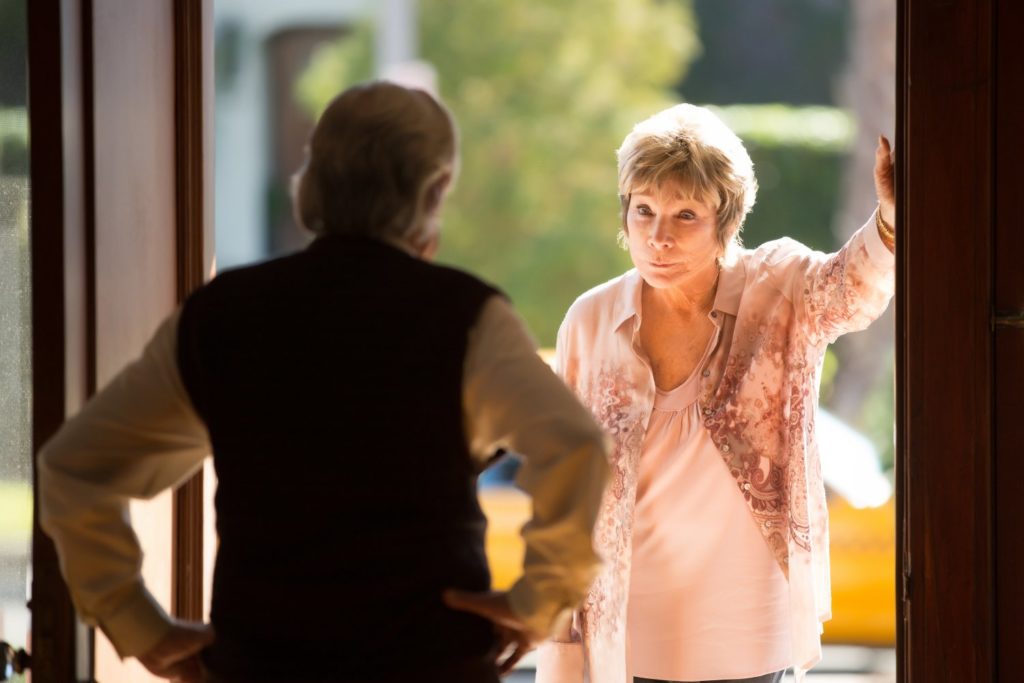
Dismayed at the abysmal obituary Anne pens, Harriet decides on a new course of action; reshape her legacy. Determining that there are three primary objectives that comprise a “good” obituary – friends, family and a “wild card” – Harriet sets out to meet those requirements so that Anne can write a glowing and memorable obit. Of course, in order to document this new life Harriet is carving, Anne gets sucked into the hijinks.
From mentoring a young African-American inner-city nine-year-old named Brenda who drops the f-bomb more often than Starbucks pours coffee, to taking on a new career as a disc jockey at an independent radio station which still spins records, to a road trip in order to make peace with a daughter she hasn’t seen in years and, yes, to even getting revenge against her former partners at her ad agency, Harriet, Anne and Brenda form a bond that is not only unbreakable, but life changing for them all.
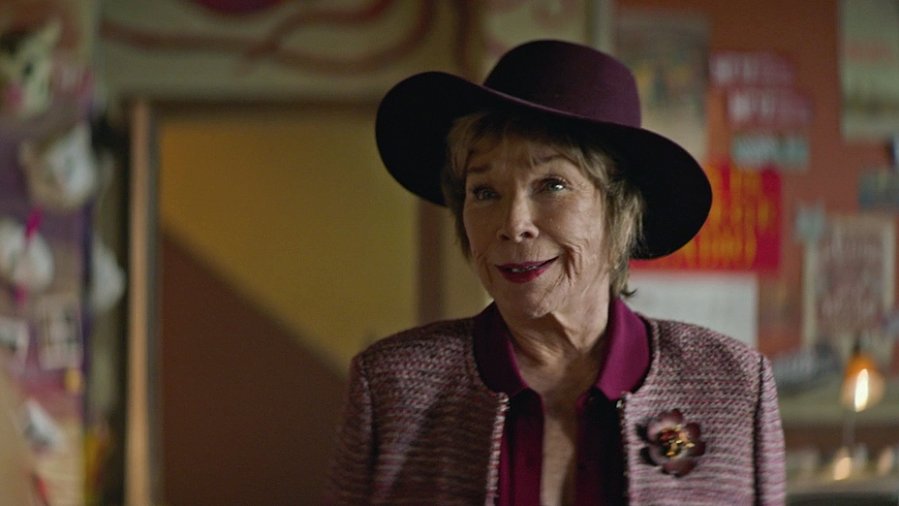
Casting is impeccable but this IS Shirley MacLaine’s movie. She is the center of its universe and everyone and everything not only revolves around her, but blossoms because of her. Shirley MacLaine is pure Shirley! Sharp. Rapier with wit and delivery. Movements and moments we have seen 1000 times from her and know the emotions fueling them, i.e., holding a glass to her forehead when getting ready to say something profound or pissed off, the way she purses her lips and lowers ever widening eyes in feigned disdain. All of it – every syllable, every eye roll – is pure gold. While MacLaine has played similar roles in films like “Postcards from the Edge”, “Terms of Endearment” and “Evening Star”, or even “Bernie”, none has really touched on the idea of mortality when it comes to MacLaine or her characters as each and every one seems indefatigable and immortal. Which is where THE LAST WORD goes beyond.
As the story progresses and Harriet’s obituary adventures are put into play, MacLaine’s performance becomes richer and more full-bodied like Harriet’s daily glasses of red wine, sparkling just a bit brighter and with even more color when put up to the light.
Thanks to MacLaine’s history, the film is populated with photos of her at varying stages of her career, immediately giving the film and the audience the necessary touchstones of reality which invests us even deeper into Harriet and the idea of mortality. Because of MacLaine’s own legacy and the life which moviegoers have shared, there is a poignancy that is palpable and beyond believable.
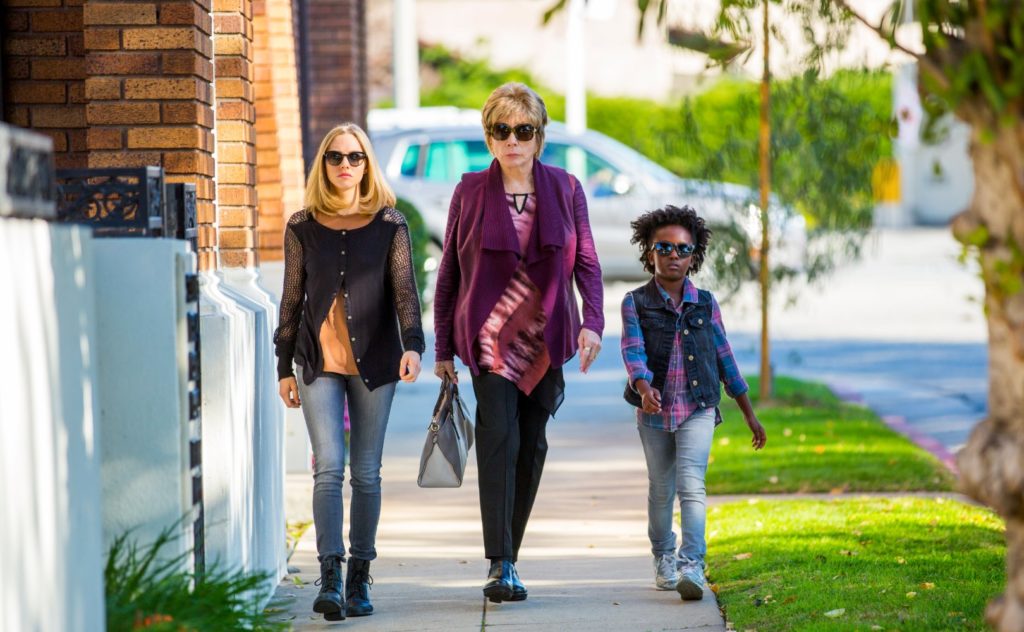
But then there’s Amanda Seyfried as Anne Sherman, and newcomer Ann’Jewel Lee as Brenda. Seyfried delivers a solid performance as Anne, but given Anne’s insecurities about her writing abilities (which is why she writes obits; not as creatively taxing) I would have liked to see more hesitation and doubt from Seyfried. Nevertheless, she is engaging and shines next to MacLaine and Ann’Jewel Lee. The chemistry between these three women is undeniable. The generational differences come together in a beautiful blend to create a unique embraceable family. You believe the love these three women come to have for each other – and the wisdom of life which Harriet passes on. But lookout for Ann’Jewel Lee! She is a spitfire and can hold her own going toe-to-toe with MacLaine. Ann’Jewel has an energy that leaps off the screen!
A credit to Fink’s story and to the abilities of each of these three main actresses is the way in which personalities and traits almost osmotically take shape within one another. Harriet softens as we see a bit of Anne filter into her. Anne gets stronger and braver taking on some of Harriet and Brenda. Brenda tries to tone down the f-bombs but provides a wide-eyed unjaded fresh look at the beauty to be found in the world around her. It’s almost as if each is a part of the other with the trio together painting a complete picture of one woman.
A sidebar romance between Seyfried’s Anne and the radio station owner Robin Sands as played by Thomas Sadoski is beyond charming and adds a cute element to the story and to the growth of Anne.
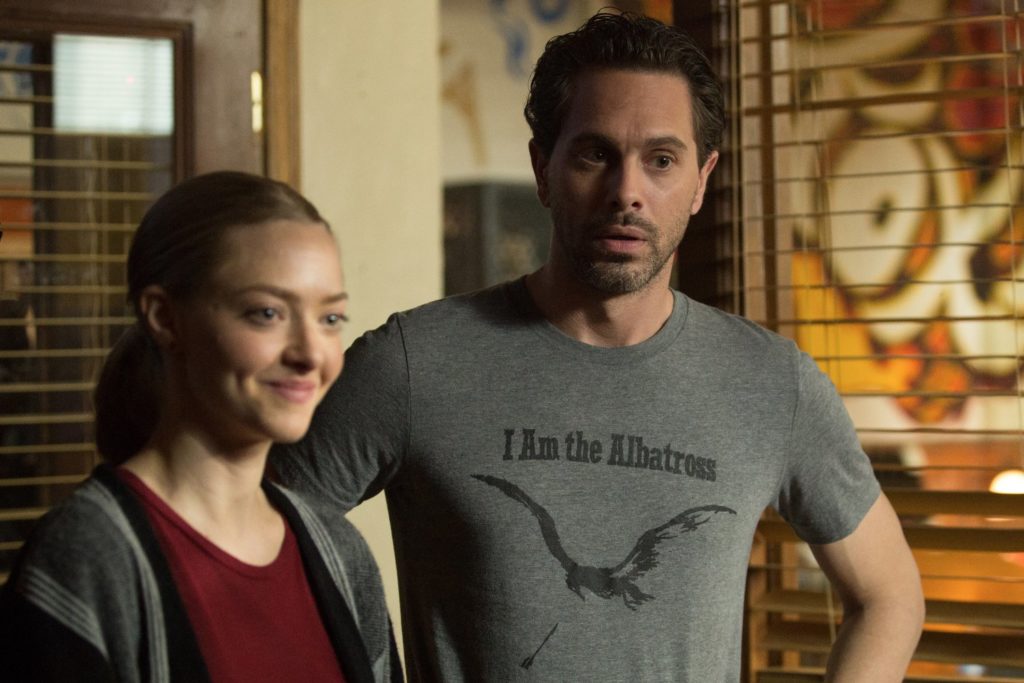
Not to be missed are some wonderful character performances from Gedde Watanabe as Harriet’s gardener, Tom Everett Scott as newspaper publisher Ronald Odom, Philip Baker Hall as Harriet’s ex-husband and Anne Heche as estranged daughter Elizabeth. A real standout is Joel Murray as ad agency employee Joe Mueller. Murray gets some quality screen time with MacLaine but also brings a wonderful layer to Harriet’s backstory.

In a somewhat surprising move, Mark Pellington, known for writing and directing emotionally layered films like “The Mothman Prophecies”, “Henry Poole Was Here”, and “I Melt With You”, even though only directing THE LAST WORD, chose a project which attacks the same personal themes he typically writes about as opposed to what he originally thought would be something different. According to Pellington, he initially thought he would just do a “simple story” with THE LAST WORD. “It won’t be personal. It will be personal, but it won’t be. I’ll just stay out of the way and tell the story. . .tell the story but every shot doesn’t have to be personalized.” What Pellington does with Stuart Ross Fink’s script is deliver an emotionally layered and textured story and film which is not only so beautifully told, but one which feels deeply personal; like a natural extension of themes of which he normally writes – searching, the idea of family, connection, life, death, rebirth. Pellington’s strongsuit as a storyteller, be he directing or writing or both, is always about human connection, about family, making his direction of Stuart Ross Fink’s script a perfect pairing.
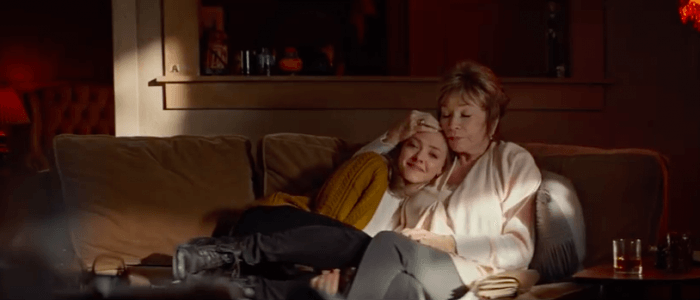
The visual palette designed by Pellington and cinematographer Eric Koretz is rich, creating its own story which is a visual match to the scripted words. Lighting and framing is deliberate and telling. Strong visual references mark various emotional beats throughout the film. Early scenes of Harriet in her home are ones of stark loneliness, often with an imbalance within the frame akin to her own life being a bit askew, something that slowly dissolves into balance and symmetry as the film progresses and Harriet connects with the world through Anne and Brenda and the radio show. And while opening scenes of the Lauler home are controlled with tempered neutral colors, by the final act with Harriet’s metamorphosis almost complete, the Lauler living room is almost ethereal with soft sunlight backlighting through the windows on Anne and Brenda as they dance about the room with Harriet watching with a lyrical swaying. Simply exquisite.
Pellington’s longtime production designer Richard Hoover outdoes himself with the rich dark wood and glass of the radio station which reminds us of the old world of Harriet, a world of music and DJ’s that she loved and which she is now in her twilight is a part. The past becomes the present. The Lauler home bodes beautiful design complete with formal dining room, sconces and no light, something which is celebrated in the lighting and lensing by Koretz. The visual metaphor speaks volumes, very notably almost as foreshadowing in the first act before lightening up in the second and third act. Another smart design in the film is the newspaper office which was merely a matter of finding the right location – the offices of the Daily Journal in Los Angeles.
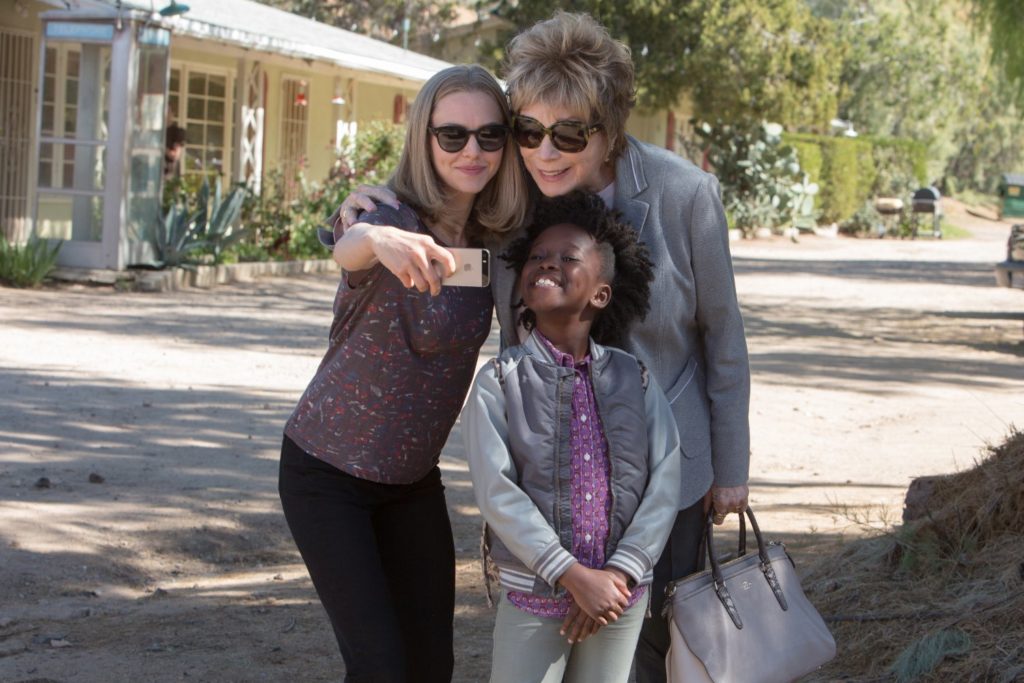
As comes as no surprise in a Mark Pellington film is the music. Musical selections run the gamut of multiple genres and each fits not only individual scenes perfectly, but come together in a musical journey.
A simple story. A beautiful story. A complexity of emotion. Characters who are human and resonant. You’ll laugh. You’ll cry. THE LAST WORD speaks from the heart with the last word on life and legacy – Love.
Directed by Mark Pellington
Written by Stuart Ross Fink
Cast: Shirley MacLaine, Amanda Seyfried, Ann’Jewel Lee, Thomas Sadoski, Tom Everett Scott, Gedde Watanabe, Joel Murray, Anne Heche, Philip Baker Hall












